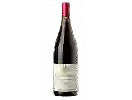
Winery Francois VillevertLa Coulée Chardonnay
In the mouth this white wine is a with a nice freshness.
This wine generally goes well with pork, vegetarian or shellfish.
Taste structure of the La Coulée Chardonnay from the Winery Francois Villevert
Light | Bold | |
Dry | Sweet | |
Soft | Acidic |
In the mouth the La Coulée Chardonnay of Winery Francois Villevert in the region of Loire Valley is a with a nice freshness.
Food and wine pairings with La Coulée Chardonnay
Pairings that work perfectly with La Coulée Chardonnay
Original food and wine pairings with La Coulée Chardonnay
The La Coulée Chardonnay of Winery Francois Villevert matches generally quite well with dishes of pork, shellfish or spicy food such as recipes of italian pasta, navarin of the sea da gigi or kimo (malagasy dish with beef).
Details and technical informations about Winery Francois Villevert's La Coulée Chardonnay.
Discover the grape variety: Chardonnay
The white Chardonnay is a grape variety that originated in France (Burgundy). It produces a variety of grape specially used for wine making. It is rare to find this grape to eat on our tables. This variety of grape is characterized by small bunches, and small grapes. White Chardonnay can be found in many vineyards: South West, Burgundy, Jura, Languedoc & Roussillon, Cognac, Bordeaux, Beaujolais, Savoie & Bugey, Loire Valley, Champagne, Rhone Valley, Armagnac, Lorraine, Alsace, Provence & Corsica.
Last vintages of this wine
The best vintages of La Coulée Chardonnay from Winery Francois Villevert are 2016
Informations about the Winery Francois Villevert
The Winery Francois Villevert is one of of the world's greatest estates. It offers 7 wines for sale in the of Loire Valley to come and discover on site or to buy online.
The wine region of Loire Valley
The Loire Valley is a key wine region in western France. It follows the course of the Loire River on its Long journey through the heart of France, from the inland hills of the Auvergne to the plains of the French Atlantic coast near Nantes (Muscadet country). Important in terms of quantity and quality, the region produces large quantities (about 4 million h/l each year) of everyday wines, as well as some of France's greatest wines. Diversity is another of the region's major assets; the styles of wine produced here range from the light, tangy Muscadet to the Sweet, honeyed Bonnezeaux, the Sparkling whites of Vouvray and the juicy, Tannic reds of Chinon and Saumur.
The word of the wine: Fumet
Older synonym for bouquet.














